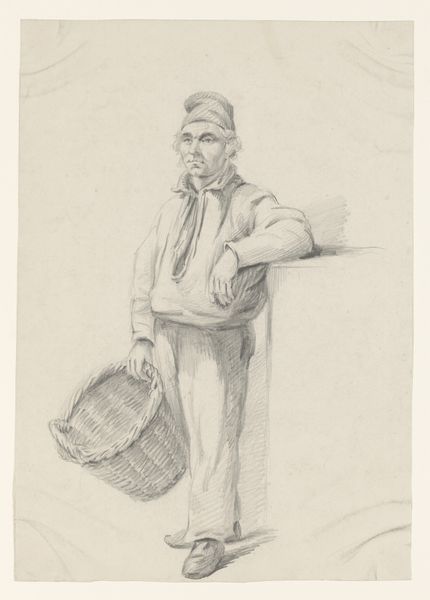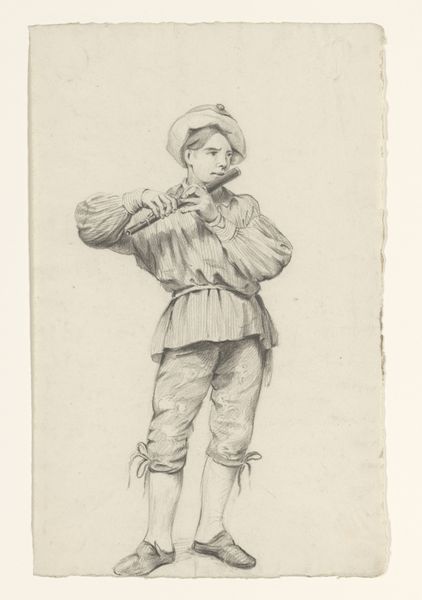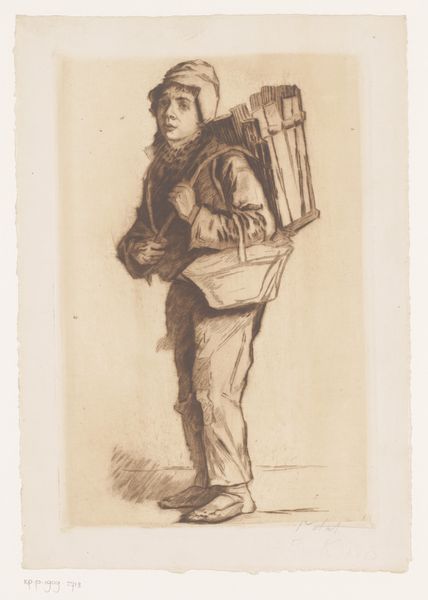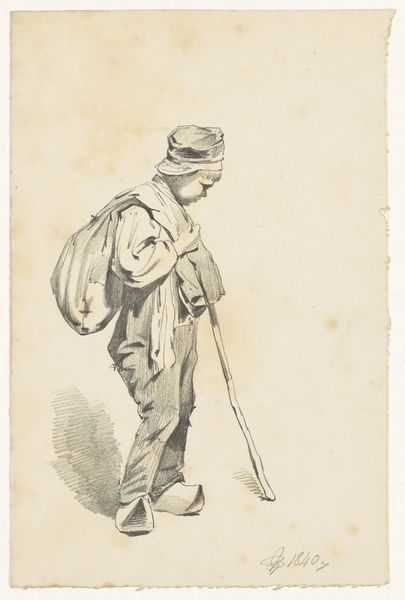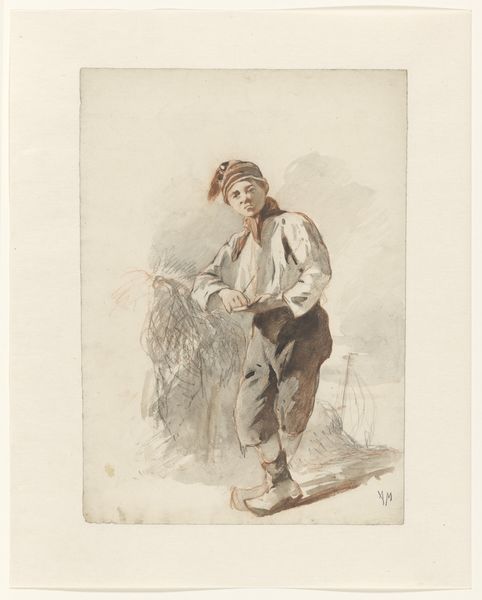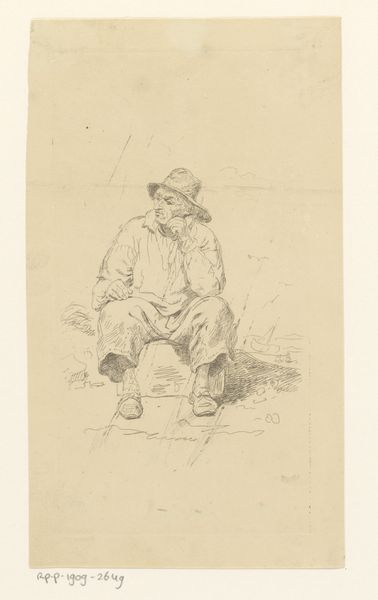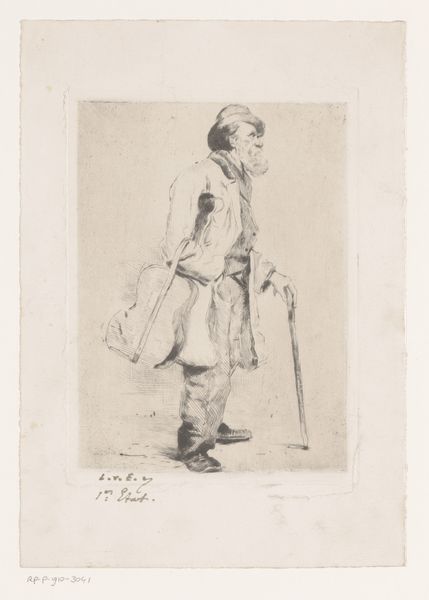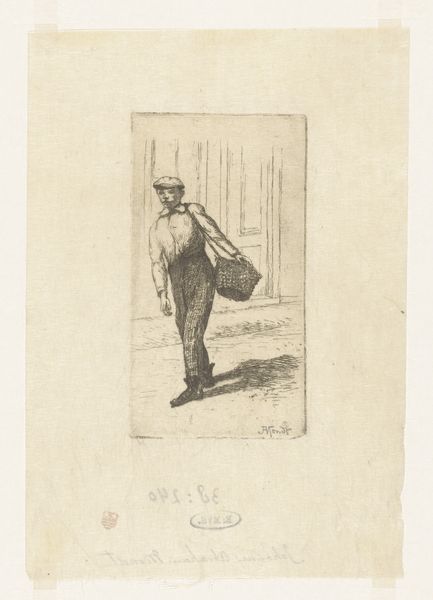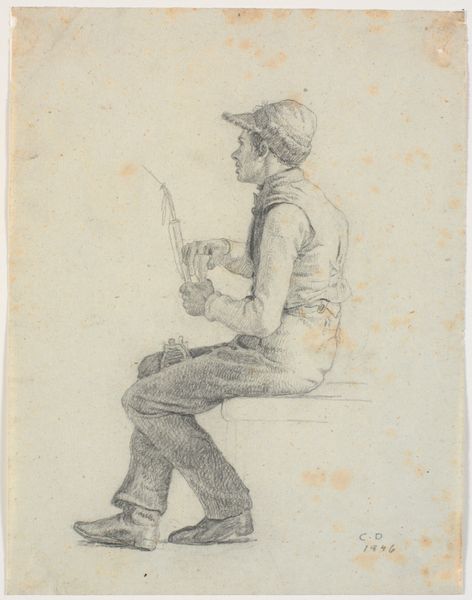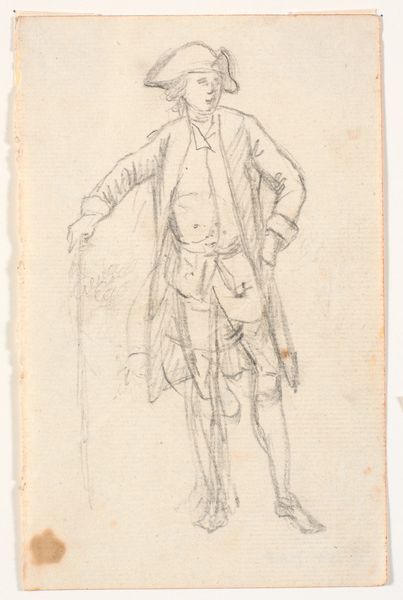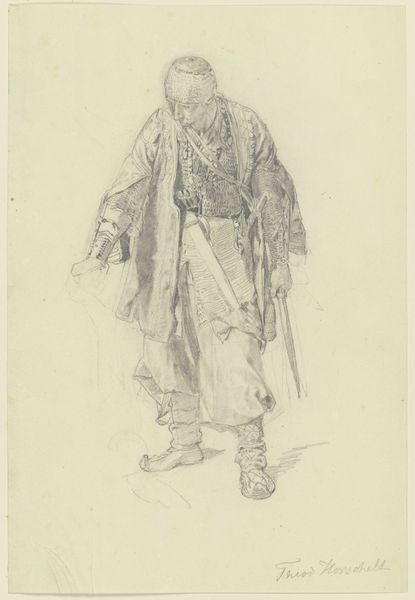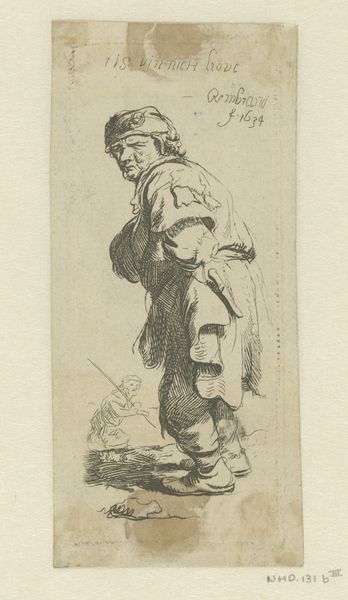
drawing, pencil
#
portrait
#
pencil drawn
#
drawing
#
light pencil work
#
pencil sketch
#
figuration
#
personal sketchbook
#
idea generation sketch
#
pencil drawing
#
ink drawing experimentation
#
pen-ink sketch
#
pencil
#
sketchbook drawing
#
pencil work
#
genre-painting
#
realism
Dimensions: height 308 mm, width 235 mm
Copyright: Rijks Museum: Open Domain
Editor: This is "Standing Man with Umbrella and Pack on his Back," a pencil drawing by Alexander Cranendoncq, created sometime between 1809 and 1869, now housed in the Rijksmuseum. It has such a quiet, understated quality. What strikes you most about this piece? Curator: The beauty is, as you say, in its understated quality. Think about the 19th-century Dutch art world – obsessed with realism and genre painting. But who gets to be represented? Genre paintings often focused on the idyllic lives of the wealthy. This drawing seems to gently push against that. We see a working-class individual, burdened perhaps, but not romanticized. What does the simple act of portraying someone like this do for its audience? Editor: It gives them visibility. The simple composition allows us to think about everyday life for regular folk. But this isn’t like a formal painting exhibited for show, this work is in pencil. So, I imagine it wasn't seen publicly at the time. What does the choice of material tell us about its context? Curator: Exactly! This was likely a personal study, a private reflection. Cranendoncq is engaging with a subject often absent from mainstream art, but within the more democratic, private sphere of drawing. Was it preparatory for a painting, or simply an act of observing and recording a segment of society rarely deemed worthy of artistic attention? Perhaps he’s making a statement about whose lives matter, even if subtly. Editor: That's so interesting, to think of the drawing itself as a quiet form of social commentary. I appreciate how this perspective sheds light on art's potential to shape the visibility and worth of ordinary subjects, regardless of where it is displayed. Curator: Precisely. It's a reminder that even in the most personal of artistic expressions, there can be social and political undercurrents at play, especially when looking at 19th century representation of individuals in society.
Comments
No comments
Be the first to comment and join the conversation on the ultimate creative platform.
